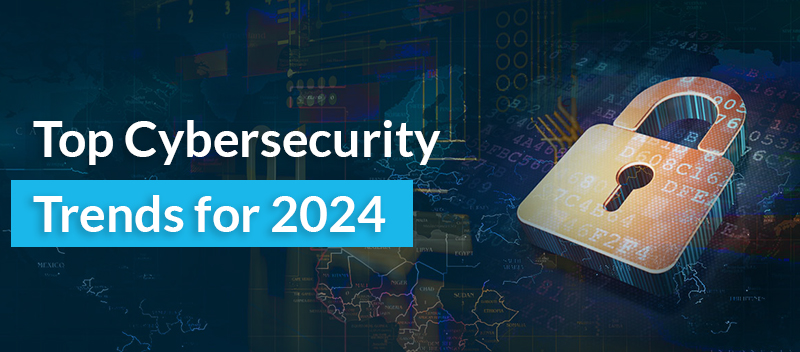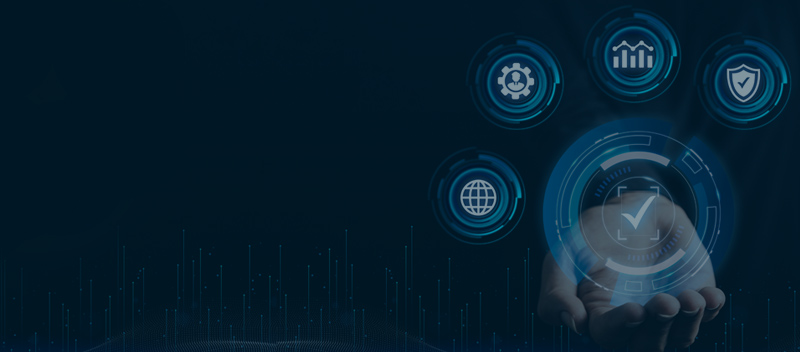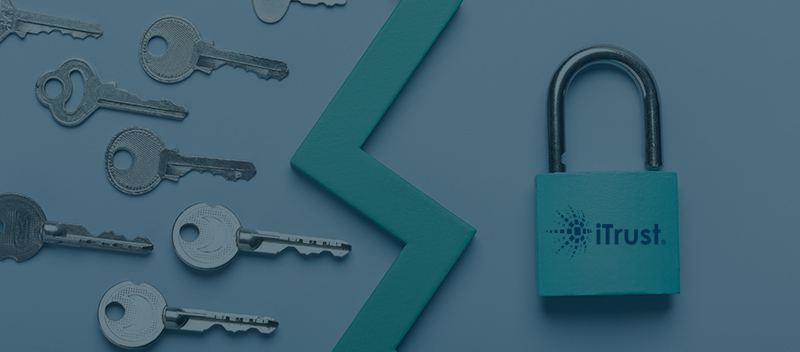Blog Predicting the Future: Top Cybersecurity Trends for 2024
Predicting the Future: Top Cybersecurity Trends for 2024

Key Takeaways
This article provides valuable insights for cybersecurity professionals, IT decision-makers, business executives, and anyone interested in staying informed about the latest cybersecurity trends and best practices. It underscores the potential impact of emerging trends like the persistence of ransomware attacks, the prominence of the Zero Trust model, and the importance of Identity and Access Management on organizations. The article also offers practical measures to mitigate associated risks, emphasizing the need for robust cybersecurity measures, employee training, and staying updated with evolving cyber insurance requirements.
As the digital world continues to expand, so does the importance of cybersecurity. With growing technological advancements, we are witnessing an evolution in threats that challenge the security of our data and systems.
Cybersecurity is no longer a luxury or an afterthought; it has become necessary in our interconnected world. The rapid proliferation of technologies like AI, IoT, and cloud computing has created new vulnerabilities, making securing systems more complex.
Consequently, cybersecurity is about defending against threats and enabling businesses to innovate and grow without fear of compromise. This critical field is increasingly shaping our future, demanding our attention and preparedness for the evolving cyber landscape.
Top Cybersecurity Trends for 2024
1. Cybersecurity Skills Crunch
The cybersecurity landscape faces a significant challenge in 2024: a persistent shortage of skilled professionals. This issue has intensified, with a need for more personnel possessing the necessary expertise to safeguard enterprises from cyber threats. Recent research reveals that 54 percent of cybersecurity experts believe the detrimental impacts of this skills gap on their organizations have worsened over the last two years.
However, solutions are emerging. Anticipated efforts to address this pressing concern include ongoing salary increments for skilled individuals, making the field more attractive for prospective talent. Additionally, there’s an expected increase in investments towards training, development, and upskilling programs, aiming to build a strong pipeline of competent professionals ready to meet the evolving cybersecurity challenges.
2. Attacks Against Cloud Services
The digital age has significantly migrated business data, processes, and infrastructure to cloud computing. This transition, while offering numerous benefits such as scalability, cost-efficiency, and accessibility, also brings with it new challenges and threats. As businesses increasingly rely on the cloud for their operations, these platforms become attractive targets for cyber attackers. The vulnerabilities can range from misconfigured storage buckets to sophisticated attacks designed to exploit weaknesses in cloud security architecture.
To mitigate these risks, businesses must implement a mature, streamlined cloud governance model. Such a model encompasses robust security protocols, clear guidelines for access control, and regular audits of cloud resources. A well-defined cloud governance strategy helps maintain the integrity and confidentiality of data and accelerates security response capabilities. Thus ensuring that businesses can promptly address any potential breaches, minimizing damage and downtime.
3. Rise in IoT Devices
The exponential growth of Internet of Things (IoT) devices is reshaping our daily lives, providing increased interconnectivity and internet accessibility. However, this proliferation also brings more potential vulnerabilities that cybercriminals can exploit. The ongoing work-from-home phenomenon has further accentuated these security risks, as workers often utilize inadequately secured equipment for connecting and sharing data. Unfortunately, the design of these devices frequently prioritizes user-friendliness and convenience over robust security measures, leading to potential risks arising from weak security protocols and passwords.
This situation underscores the urgent need to improve the security of IoT devices and the networks they connect to. Despite long-standing awareness of these vulnerabilities, the industry’s reluctance to promptly adopt IoT security standards continues to make it a weak point in cybersecurity. As the integration of IoT devices into our daily lives continues to increase, the focus on reinforcing their security must keep pace to ensure both personal and professional data remain protected.
4. AI-driven Cyber Attack Surge
There’s a growing concern regarding the proliferation of increasingly complex and intelligent AI-driven cyber assaults. In this new wave of cybersecurity threats, cybercriminals are turning to AI to automate attacks, making them harder to detect and prevent. AI’s advanced capabilities are used to pinpoint software vulnerabilities, craft convincing phishing emails, and execute highly targeted ransomware attacks. These developments have intensified the adversarial landscape, marking a shift in the sophistication and unpredictability of cyber threats.
In response to this escalating challenge, cybersecurity professionals are also harnessing the power of AI. They’re leveraging AI and machine learning to detect and respond to threats more effectively, creating a dynamic and evolving battleground. AI in cybersecurity allows for the automation of threat detection, faster response times, and predictive analytics to anticipate potential attacks. This level of vigilance is necessary in the face of adversaries who are equally equipped with AI capabilities.
5. Zero Trust Security
The Zero Trust model is a prominent security framework that assumes no inherent trust within its network. It operates on the principle of “never trust, always verify,” regardless of whether the access attempt comes from inside or outside the organization. Instead of assuming everything behind the corporate firewall is safe, the Zero Trust model requires all users, even those already inside the organization’s network, to be authenticated, authorized, and continuously validated for security configuration and posture.
The continued prominence of the Zero Trust model can be attributed to its effectiveness in today’s increasingly complex and perimeter-less digital environment. The model is particularly suited to address the security challenges of remote work, bring-your-own-device (BYOD) policies, and cloud technology. This is where traditional security perimeters no longer apply. Organizations are better equipped to defend against external and internal threats by adopting a Zero-Trust approach.
6. Ransomware Attacks
Ransomware attacks remain a pervasive and persistent threat in the digital landscape. These attacks, which involve malicious software that encrypts a victim’s files and then demands payment to restore access, can have devastating consequences. The financial implications of ransomware attacks are often severe. This includes costs from the demanded ransom and the downtime, loss of data, and reputational damage. The potential for disruption to operations is significant, as these attacks can immobilize critical systems and halt business processes.
Given the persistence of ransomware threats, robust cybersecurity measures are essential. Organizations must implement comprehensive security protocols like penetration testing and advanced threat detection tools. Equally important is employee training regarding security awareness, as many ransomware attacks are initiated through phishing emails or other forms of social engineering.
For more on our cybersecurity and compliance services, Click Here
7. Identity and Access Management (IAM)
Identity and Access Management (IAM) will likely be included in the top cybersecurity trends 2024 list, particularly for the enterprise sector. As cloud and SaaS applications become the new standard, identity compromise is expected to be a prevalent technique cyber attackers employ. Additionally, with the rise in IoT devices, robust authentication mechanisms associated with IAM will become increasingly critical.
In 2024, we can also expect a tightening of cyber insurance requirements. This is due to the escalating number and sophistication of cyber attacks, including the continuous global ransomware threats. Also, the trend of attackers harvesting encrypted data is expected to increase. This emphasizes the importance of robust cybersecurity measures like IAM to protect sensitive data and maintain operational resilience.
Staying Ahead of the Cybersecurity Curve in 2024
As we look towards 2024, we expect significant cybersecurity trends, such as the rise of cyber-attacks and the further modernization of tools and strategies. In this evolving landscape, it’s more important than ever for organizations to stay ahead of the curve. This is where TrustNet comes in. With our comprehensive cybersecurity and compliance solutions, we can help businesses understand these emerging trends, implement robust security measures, and effectively mitigate threats. By partnering with TrustNet, businesses can safeguard their operations against future cybersecurity challenges.
Secure your future with TrustNet’s comprehensive cybersecurity and compliance services. Talk to an expert today.




